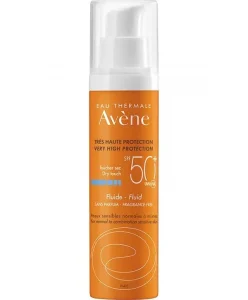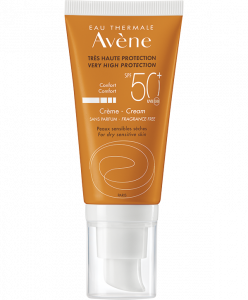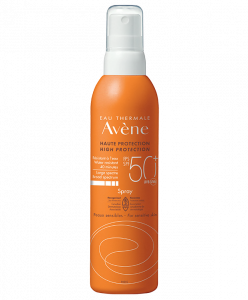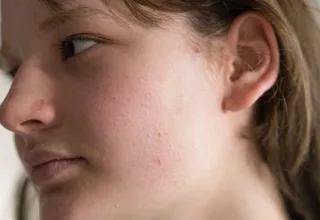
Sun protection is always in season. It’s important to protect your skin from sun damage all year round, regardless of the weather. Why? Because sun exposure can cause sunburn, skin aging, eye damage, and skin cancer. To protect yourself from these problems, we reached out to the dermatologist and cosmetologist Dr. Rasha Amer to shed some light on the sun protection guidelines in order to stay safe in the sun and take care of your skin.
How important is sun safety?
Everybody needs some exposure to the sun to produce vitamin D (which promotes calcium absorption for stronger, healthier bones). But unprotected exposure to the sun’s ultraviolet (UV) rays can damage the skin, eyes, and immune system.
Sunburn and tanning are the result of too much exposure to the sun’s ultraviolet (UV) rays. Even if a sunburn or tan goes away, the damage to the skin cells does not, and the effects cannot be reversed. These effects include skin cancer and premature aging of the skin, such as wrinkles and age spots. UV exposure adds up over time, increasing the chance of developing skin cancer. Therefore, you should follow the sun protection guidelines at a young age.
How to protect your skin from sun damage?
The sun’s rays are nice to feel, but they’re no friend to your skin. Keep in mind that it’s not just sunbathing that puts you at risk, but also staying in the sun without proper protection. If you regularly engage in outdoor activities or work in the open air, you are at greater risk. Be sure to use the five “S’s” of sun safety and never burn!
1- SLIP on covering clothing
Clothing can be one of the most important barriers between your skin and the sun. Choose clothing that covers as much skin as possible. Always keep your shoulders covered as they can easily burn. Dr. Rasha Amer advises wearing tightly woven clothing, long-sleeved shirts, and pants.
Some clothing may have an ultraviolet protection factor (UPF), which is a guarantee of how much UV protection a fabric provides.
2- SLOP on SPF 30+ sunscreen
Dr. Rasha Amer recommends applying sunscreen at least 15 to 30 minutes before going outside. Always use sunscreen with a sun protection factor (SPF) of 30 or higher. Reapply every two hours.
Remember, no sunscreen provides complete protection and must be used in conjunction with other sun protection measures. So never rely on sunscreen alone to prevent skin damage.
3- SLAP on a hat
Choose a wide-brimmed hat, such as a legionnaire or bucket hat, that protects your face, nose, neck, and ears, which are common sites for skin cancers. Caps and visors do not offer enough coverage.
4- SLIDE on quality sunglasses
The sun’s UV rays can be dangerous for your eyes. Therefore, it is important to wear quality sunglasses. Sunglasses and a wide-brimmed hat worn together can decrease UV exposure to the eyes by up to 98%. They should be worn outside during daylight hours.
5- SHADE from the sun whenever possible
Shade can create a good barrier between your skin and the sun. Look for shade whenever possible, especially during the hottest part of the day when UV penetration is highest. Shade reduces UV rays, but they can still reach you by reflection.
What are the recommended guidelines for the use of sunscreen?
According to Dr. Rasha Amer, sunscreen is a product that absorbs or reflects the sun’s ultraviolet rays and helps fight sunburn. Sunscreens are available in lotion, cream, fluid, oil, stick, spray and paste forms.
If you are wondering how to protect yourself from the sun, Dr. Rasha Amer advises you to consider the following recommendations:
- Use sunscreen every day.
- Use a broad-spectrum sunscreen that protects against UVA and UVB rays.
- Apply sunscreen to any uncovered skin and avoid getting it in your mouth or eyes.
- Reapply every two hours.
- No sunscreen completely blocks UV rays. Therefore, additional protection is needed.
- Be careful if you are taking medications that make you more sensitive to the sun.
Sun protection is non-negotiable, so we found a formula for every skin type. With that in mind, check out our 3 favorite lightweight sunscreens – all SPF 50+. The price of these sun protection creams is very affordable and they are budget-friendly. Use them and have the safest summer possible.
Eau Thermale Avène Very High Protection Fluid SPF 50+: This sunscreen is used for normal to combination skin. It has a fluid, light, non-sticky texture, offering optimal protection against UVB and UVA rays. Before exposure to the sun, apply a sufficient amount of product to the entire face.
Eau Thermale Avène Very High Protection Cream SPF50+: This product is used for dry to very dry skin and provides very high sun protection for the face. It can help prevent solar keratosis, sun spots, and premature aging of the skin. It can also help prevent certain skin cancers.
Eau Thermale Avène Very High Protection Spray SPF 50+: Before exposure to the sun, apply a significant amount of product to the whole body. Its easy-to-spread texture protects and moisturizes sensitive skin.
Are sunscreens safe?
Some health and environmental groups are concerned about the ingredients in some sunscreens and their potential effects on humans and nature.
For this reason, Dr. Rasha Amer warns against products containing ingredients such as retinyl palmitate, vitamin A or retinol, oxybenzone, avobenzone, homosalate, cyclomethycaine, formaldehyde, and microbeads. She adds that some sunscreen ingredients can make the skin more sensitive by causing redness or irritation.
However, some researchers have found that the potential risk of not using sunscreen far outweighs the risks of using sunscreen.
A recap of sun protection guidelines to stay sun-safe
It’s normal to want to get out in the sun when the weather warms up. And it’s safe, as long as you stick to the sun protection guidelines and protect your skin. Staying in the shade, protecting your skin with clothing, and using a broad-spectrum sunscreen with a sun protection factor (SPF) of at least 30 can help reduce your risk. Dr. Rasha Amer states that it is important to avoid the sun between 10 a.m. and 4 p.m. when the sun’s rays are strongest.
It is also crucial to keep an eye on your skin. If you notice anything unusual such as the appearance of new spots or changes in the shape, color, or size of existing spots, contact your doctor. Most skin cancers can be effectively treated if detected at an early stage.












